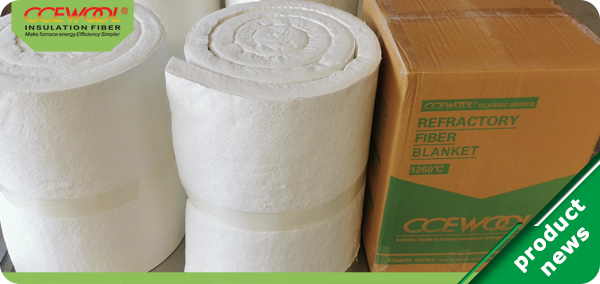Ceramic fiber blankets are popular insulation materials known for their exceptional thermal properties. They are widely used in various industries, including aerospace, power generation, and manufacturing, due to their high capabilities. One of the crucial factors that contribute to their effectiveness is their low thermal conductivity.
Thermal conductivity is a measure of a material's ability to conduct heat. It is as the quantity of heat that flows through a unit area of a material in a unit of time per unit temperature difference. In simpler terms, thermal conductivity determines how well a material can transfer heat energy.
Ceramic fiber blankets have an extremely low thermal conductivity, which is a desirable characteristic insulating applications. The low thermal conductivity of these blankets is primarily attributed to the unique structure composition of the ceramic fibers.
Ceramic fibers are made from a blend of alumina and silica materials, which have inherently low thermal conductivity. These fibers are thin and lightweight, with a high ratio, meaning their length is much greater than their diameter. This structure allows for more air and voids within the blanket, which act as thermal barriers and impede the transfer of heat.
The thermal conductivity of a ceramic fiber blanket can vary depending on the specific type and composition of blanket, as well as its density. Generally, the thermal conductivity of ceramic fiber blankets ranges from0.035 to 0.08 W/m·K. This range indicates that ceramic fiber blankets have excellent insulation properties, as they possess much lower thermal conductivity compared to other common insulation materials as fiberglass or rock wool.
The low thermal conductivity of ceramic fiber blankets offers several benefits in applications. Firstly, it helps reduce heat loss or gain, ensuring energy efficiency in industrial processes and buildings. By preventing the transfer of heat, ceramic fiber blankets help maintain a stable and controlled environment reducing the energy required to heat or cool a space.
Additionally, the low thermal conductivity of ceramic blankets contributes to their excellent resistance to high temperatures. These blankets can withstand temperatures up to 2300°F (1260°C) while maintaining their structural integrity and insulating properties. This makes ideal for applications that involve high-temperature environments, such as furnace linings or kiln.
Post time: Dec-06-2023


